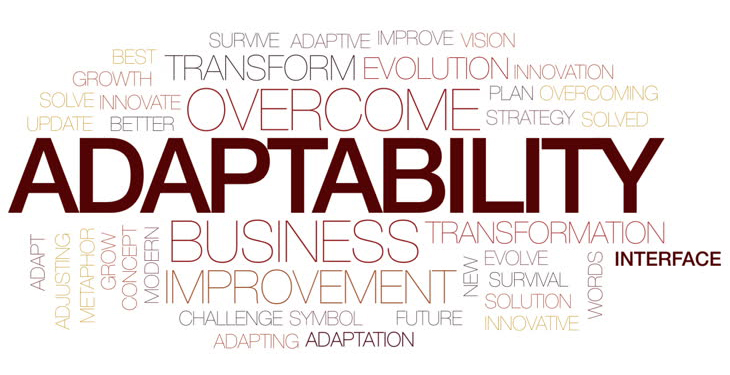On Your Marx
 Over the last two issues, we’ve talked about the emerging generation of executive clients, and how the attitudes and expectations of that generation will change the way they make business decisions, and thus (if we are smart) the way we do business. Among these changes, broadly, are the tendency to distribute information more widely and openly, the need to distribute decision making among larger groups and a different way of evaluating both the quality and effectiveness of media and communications.
Over the last two issues, we’ve talked about the emerging generation of executive clients, and how the attitudes and expectations of that generation will change the way they make business decisions, and thus (if we are smart) the way we do business. Among these changes, broadly, are the tendency to distribute information more widely and openly, the need to distribute decision making among larger groups and a different way of evaluating both the quality and effectiveness of media and communications.
If you have read any of my previous columns or blogs (thank you, by the way), then you know I am an avid reader of business books. But let me clarify — I am a reader, but not necessarily a follower. For every gee-whiz business system or philosophy that’s out there, you can point to standout successes who did exactly the opposite. I think that every business “system” is a process that worked for a particular team, in a particular business, in a particular market. I tend to take a leaf from every guru’s book, adapting their advice to my needs and the particular time and place. A long time ago, a good friend and teacher, Bill Sharer, taught me a simple truth. He told me, “It doesn’t matter what system you decide to use — just don’t let me catch you not using one of them.”
So for the last sixty days, while analyzing the changing values of the next wave of business executives, I have been struggling to develop a system for dealing with these changes — one with a simple, memorable paradigm I could work with. And I’ve found one.
Marxism.
No, not the Karl Marx kind (sorry, proletariat).
 The Groucho kind.
The Groucho kind.
Horse feathers, you say? Let me explain. On stage, in the movies, and now available for download, Groucho, Harpo, Chico and sometimes Gummo and Zeppo only looked like chaos incarnate. In fact, in every extravaganza from The Cocoanuts to Love Happy, our heroes take a quick look around, learn the native customs and steamroll their way to success. Otis B. Driftwood and his pals had a system, all right. Focus, fan out and above all, adapt.
Walk this Way
Let’s face it, we have always tried to fit in with our clients. And if we are going to play on the team with a new style of management, we have to show them that we are equipped to do so. This means that the way we communicate ideas, information, and progress has to fit right in. Collaboration and project management systems, online meeting systems, and social media communication have to be in place. And we have to be users of the systems we are promoting.
It’s not so much that new executives are the first online generation. The antecedents of the Internet date to the late 1950s. Email dates to the ’70s, the World Wide Web to the ’90s and Web-based videoconferencing to the start of this century. I think social media marks the start of the new generation of managers. Pre-social media, if you recall, you still did your best to appear as if you were in a formal office environment, even when you weren’t. So clients who got your voicemail had the impression they had reached your office, you sent formal business correspondence on letterhead, even though the letterhead lived inside your PC, you handed out printed business cards and you wore a tie to Web meetings. Post-social media, for better or worse, the illusion of a formal business environment is less and less meaningful. Ideas, and how well they are expressed and executed, will capture the attention of the new executives, and the dollars they have to spend. Which brings me back around to why we want to “walk this way.”
Your first appearance in a project often determines your role throughout. Be prepared to adopt the client’s methods of communication, and demonstrate that you know your way around the digital landscape, with its subtle boundaries between personal and professional information exchange.
Heck, in this type of environment, bringing better systems to the table and roping clients into using your systems may be the best way to get on the team — and to stay on it. (It worked for Rufus T. Firefly.)
Out Goes Innuendo
If the prevalence of electronic communications will cause our clients to adopt more collaborative management styles, we must also cope with the inevitability of a larger sales process with more information distributed to more people. Format and content are going to equally important in this open-source world. Information must be formatted so that it can be provided to the project team in common, and in easily post-able and shareable segments. And it has to be able to stand alone for those who may be participating remotely or offline. The content has to be clear, and each piece has to easily fit into the project as a whole, so that team members can access their parts on demand, and work on their parts, knowing their work product will fit seamlessly into the finished project. (This is where how the Marx Brothers did things is probably a bad example — Chico always seemed to understand what Harpo meant by “Honk! Honk!” but the rest of us just took his word for it.)
New executives expect project information to be widely shared, and therefore, easy to share. The practical implications for our industry are that we have to get over guarding our bids and project documentation as if they were state secrets, we have to spend some time figuring out what the most efficient online sharing tools are, and we have to pay a little more attention to the quality of our content. You don’t have to wear a tie to web meetings anymore –but now it’s essential that the quality of your proposals, plans and running exchanges speak well of you.
Measuring Quality
Groucho: Pick a number from one to ten.
Chico: Eleven.
Groucho: Right!
— Duck Soup, 1933
Standards ain’t what they used to be, by which I mean, the new generation of executives use different standards to assess your company’s suitability for a project. In the old days, management wanted to see your plan. Now, they want to see your process first. So leave the glossy brochure in the car. You don’t want to jump right into how you do business, however. First, let them know you’ve done your homework, and that you understand the basics of their project. Ask questions about their process, and look for areas of similarity to yours.
When it comes time to share your process — and this may happen at the first meeting or the third — pack the process narrative with examples of achievement. Give examples of projects both similar and dissimilar to theirs, and emphasize what you have learned from each example. Show that your team is experienced in non-linear project methodology and systems.
Finally, whenever possible, get your people involved with their people. This doesn’t have to wait for the sale. An open, informed team is the best way to show next-generation clients that you can play on their team, and the general on-the-ball-ness of your group can translate into credibility throughout the project.
Ready? On your Marx, get set, go!





